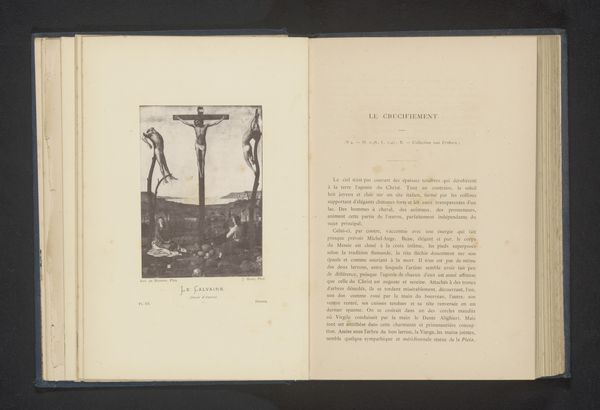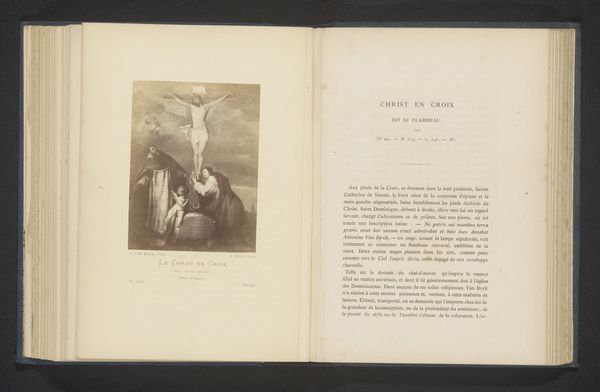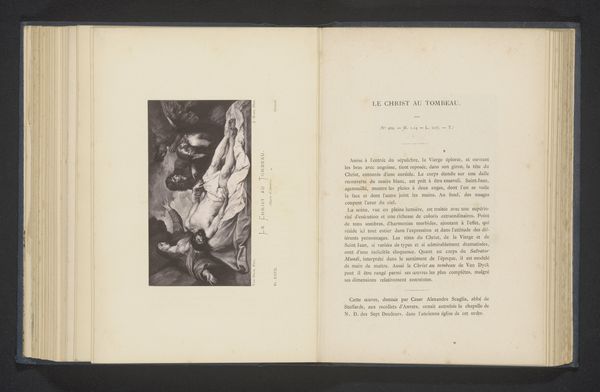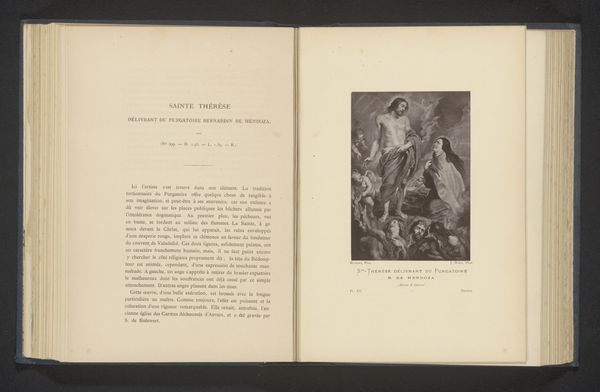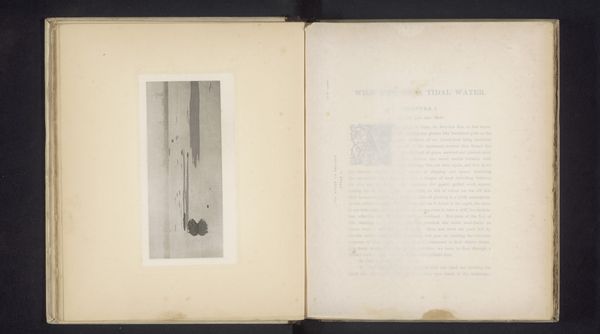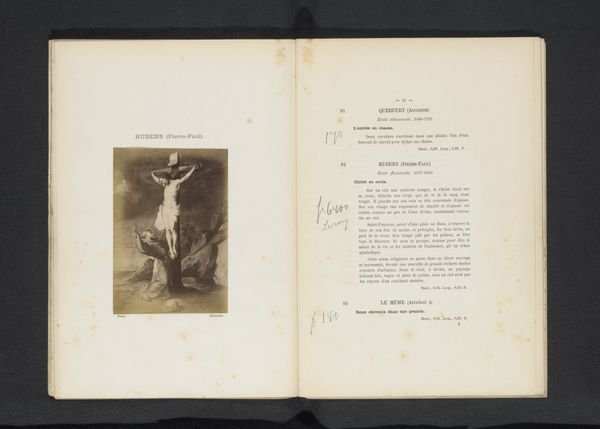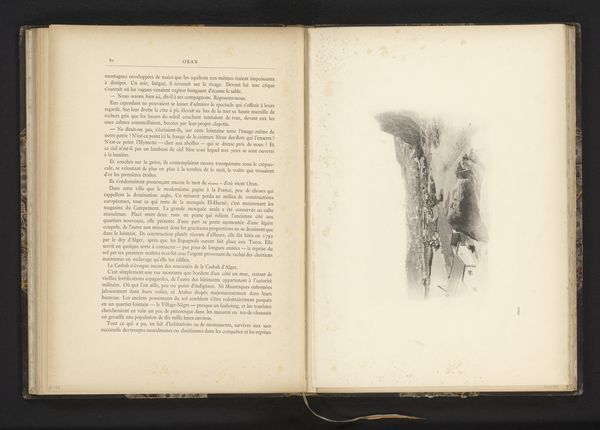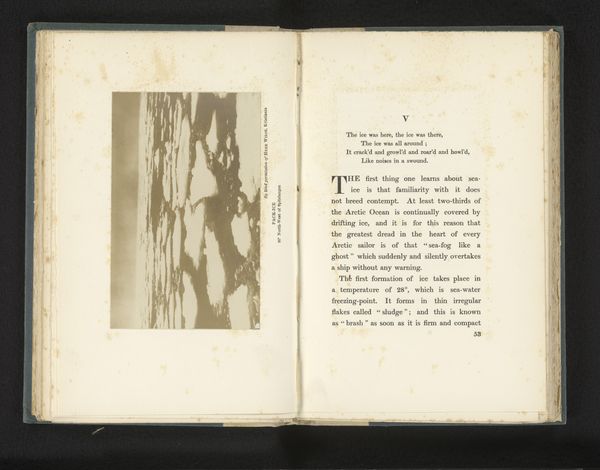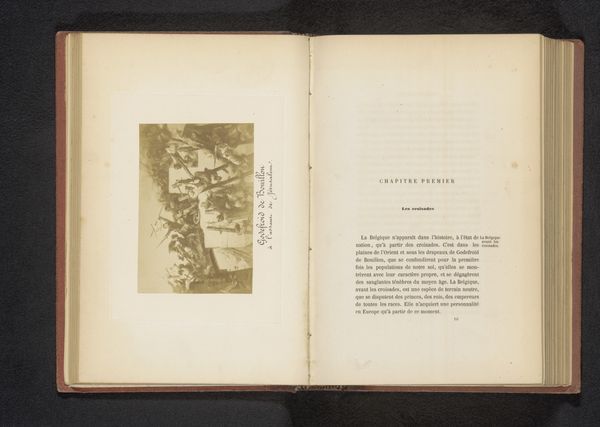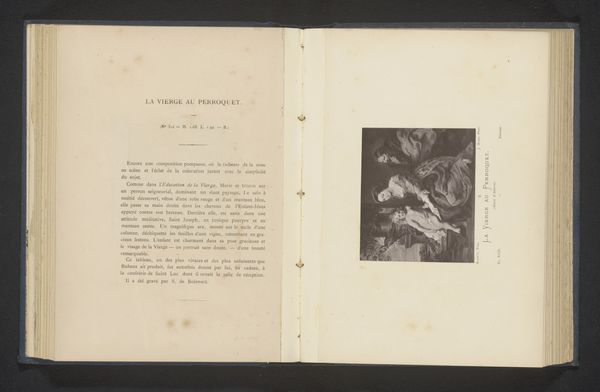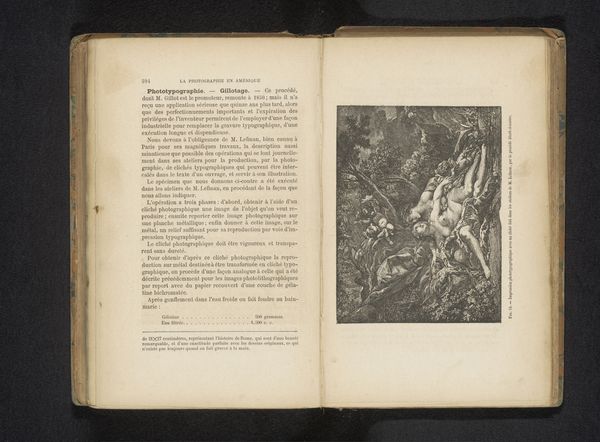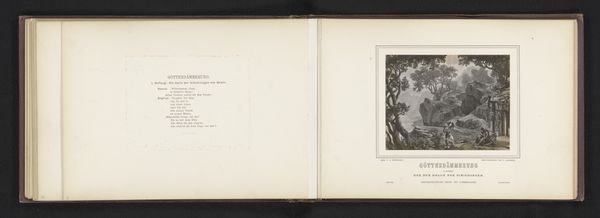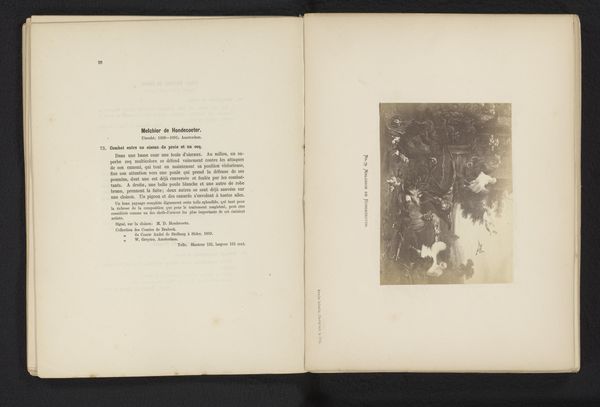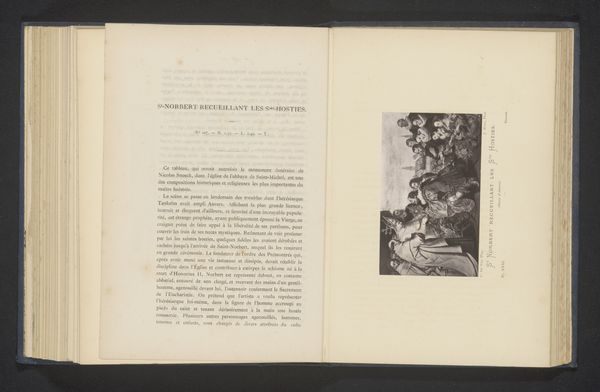
Dimensions: height 118 mm, width 80 mm
Copyright: Rijks Museum: Open Domain
Editor: So, here we have "Reproduction of Christ on the Cross by Anthony van Dyck," likely printed before 1877, as part of Joseph Maes' collection. It looks like an engraving on paper. The image feels intensely somber and stark, with a figure on the cross set against a dark background. What strikes you about this work? Curator: Immediately, I'm drawn to how the artist employs familiar symbols to tap into centuries of collective memory surrounding the crucifixion. Consider the deliberate, almost theatrical, presentation of the body; the dramatic lighting, recalling Baroque sensibilities, isn’t just about aesthetics. How might that emphasis connect to broader religious sentiments and theological considerations circulating at the time the original was produced, and then reproduced here? Editor: So you are saying, the theatrical element links the suffering depicted with the religious drama of that time? Curator: Exactly. Van Dyck masterfully uses these visual cues to evoke pity, compassion, but also reverence. Think about how the image, replicated in print, served to disseminate these emotionally charged symbols, further reinforcing their cultural and psychological impact. What sort of visual shorthand is at work here, creating immediate recognizability? Editor: I see what you mean. The symbols of the crucifixion are universal. And the choice to reproduce it as a print makes it more widely accessible. It's interesting to think about how its meaning shifts when removed from the original painted context. Curator: Precisely. This reproduction carries forward potent cultural memory. Recognizing how symbols resonate—or even evolve—across different contexts is key to unlocking an image's deeper significance. Editor: I hadn’t considered the image’s journey through different mediums and its implications on meaning. It’s like understanding its symbolism unlocks a richer story about cultural transmission and memory. Curator: Indeed. And by paying attention to how these elements recur, or transform, in different contexts, we gain a more nuanced understanding of our collective visual history.
Comments
No comments
Be the first to comment and join the conversation on the ultimate creative platform.
